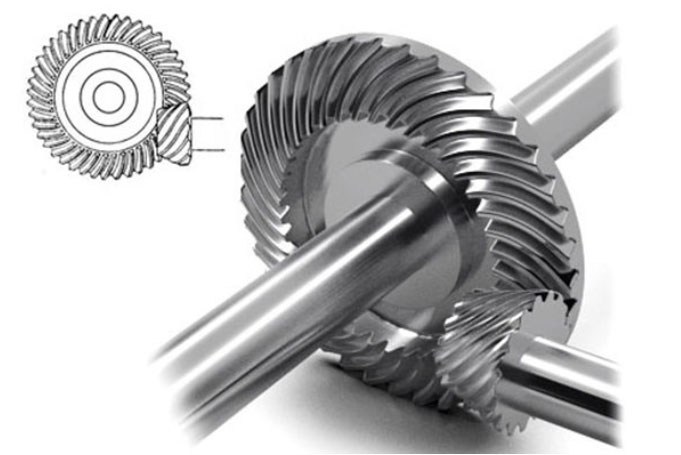Hypoid gears have indeed revolutionized gear systems in automotive manufacturing. Their unique design and performance characteristics make them particularly suitable for automotive applications, especially in drivetrain and axle systems. Let’s explore how hypoid gears have transformed the automotive industry:

- Space Optimization: Hypoid gears allow for efficient power transmission in limited spaces. They have a compact design with a high gear ratio, enabling the integration of the gear system into tight automotive assemblies. This space optimization is crucial for modern vehicles where maximizing interior space and overall compactness is a priority.
- Torque Transfer: Hypoid gears excel at transmitting high torque loads. Their offset design and larger contact area allow for efficient torque transfer between the input and output shafts. This makes them ideal for applications such as automotive differentials and axle systems, where torque multiplication and distribution are crucial for optimal vehicle performance.
- Powerful and Smooth Operation: Hypoid gears offer smooth and quiet operation due to their unique tooth profile and offset configuration. The sliding motion between the gears results in reduced noise and vibration compared to other gear types, enhancing the overall driving experience for the vehicle occupants.
- Efficiency and Fuel Economy: Hypoid gears provide high efficiency in power transmission, resulting in improved fuel economy. Their offset design reduces the sliding friction and power losses typically associated with other gear types, making them more efficient in converting input power into rotational output.
- Durability and Load Capacity: Hypoid gears are designed to handle high loads and resist wear and fatigue. They exhibit excellent load-carrying capacity and are capable of withstanding the demanding operating conditions experienced in automotive applications, including heavy loads, harsh environments, and varying road conditions.
- Versatile Applications: Hypoid gears find applications in various automotive systems, including differentials, axles, transmissions, and powertrains. They are used in both front-wheel drive (FWD) and rear-wheel drive (RWD) vehicles, as well as all-wheel drive (AWD) and four-wheel drive (4WD) systems, where their torque transfer capabilities are essential for optimal vehicle performance and traction.
- Manufacturing Advancements: The advancements in gear manufacturing technologies, such as CNC machining, precision grinding, and gear inspection techniques, have further enhanced the production of hypoid gears. These manufacturing advancements ensure the high precision, quality, and consistency required for automotive gear applications.
- Integration with Advanced Systems: Hypoid gears are compatible with advanced automotive systems such as electronic stability control (ESC), traction control, and anti-lock braking systems (ABS). Their precise torque transfer capabilities and efficient power transmission contribute to the effectiveness and reliability of these safety and performance-enhancing features.
- Future Innovations: Ongoing research and development efforts continue to focus on improving the design, materials, and manufacturing processes of hypoid gears. This includes the exploration of alternative gear materials, surface coatings, and optimization techniques to further enhance their performance, durability, and efficiency in automotive applications.
Hypoid gears have brought significant advancements to the automotive industry by providing efficient, compact, and reliable gear solutions. Their unique design characteristics, torque transmission capabilities, and compatibility with advanced automotive systems have made them indispensable in modern vehicle manufacturing, contributing to improved performance, fuel economy, and overall driving experience.
